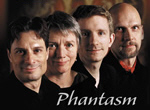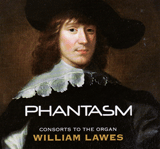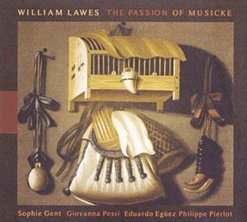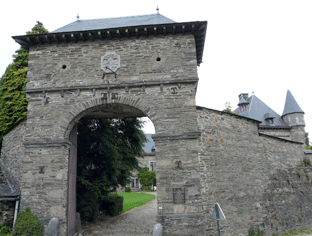|
Consorts of Jenkins and Lawes
John Jenkins Fantazia
 fantazia 5 in six parts I fantazia 5 in six parts I
in nomine 1 in six parts I
suite 3 for 2 violins, 2 viols and continuo
pavan In six parts
divisions for two viols
fantazia 8 in six parts
fantazia 3 in six parts
newark siege for 2 violins, 2 viols and organ
galliard
suite 1 for violin, viol and organ
in nomine 2 in six parts
ensemble jerome hantai
Ambronay/Naive E 8895 [60 mins]
John Jenkins (1592-1678), a prolific 17 C. composer who wrote Fantasias "by the "horse load", came from Kent and moved to East Anglia. He was a renowned virtuoso on lute and viols, and created a fundamentally lyrical and generally smooth instrumental style, without unprepared dissonances. He adopted the newly developing diatonic system and enjoyed adventurous modulation. He is famous for his sonorous six-part fantasias and in contrast The Newark Siege is a popular pictorial 'battle piece' which illustrated a disaster in the Civil War.
This is a splendid programme showing Jenkins' full range in pieces varied in the number of parts and in accompaniment by lute and organ. It was recorded sumptuously in a Paris church, April 2004 and is good for late night listening.
Not over-represented in the catalogues, another earlier CD of his Consort Music (only one overlap, the 6-part Fantazia No. 8) is The Mirrour and Wonder of his Age by
Fretwork/Paul Nicholson on
Virgin CD 5452302.
Jenkins Six-Part Consorts & Lawes' Consorts to the Organ
Phantasm
Avie AV 2099 & Linn CKD 339
More austere and demanding more from the listener is Phantasm's recording of the Six-Part Consorts of Jenkins. This is music which requires intense concentration and possibly its secrets can only be fully revealed to the players themselves. Laurence Dreyfus finds it "maddening" that "some writers insist on calling it "music for amateurs", given the difficulty in coordinating "six wildly interwoven lines". of the Six-Part Consorts of Jenkins. This is music which requires intense concentration and possibly its secrets can only be fully revealed to the players themselves. Laurence Dreyfus finds it "maddening" that "some writers insist on calling it "music for amateurs", given the difficulty in coordinating "six wildly interwoven lines".
There is a wide choice to explore this intriguing oeuvre; all are recommendable, and it will be for specialists to judge between them. 
Their new (2012) disc of William Lawes' Consorts to the Organ has a particular interest in the enthusiasm of Laurence Dreyfus' notes which cover a dozen pages about their "originality and daring". A particular aspect for commendation is his reference to particular moments by track timings in mins & seconds (not easily seen on CD machines, nor easily heard as they pass by swiftly); this is really very difficult music for non-specialists to grasp.
The general sound tends to be attractive but thick (mostly six parts, with the organ supportive but not independent). For serious listening the scores would be helpful, perhaps for putting on line for study, since the orginal music may well be out of copyright or, if not so,the goodwill of pulishers of the editions being used might be sought?
This is music to persevere with and I recommend the purchase of both discs.

Lawes The Passion of Musicke
Suite in g (Pavan, Almane, Corant, Saraband) --
Solos in G (Pavan(anon.), Corant, Corant, Almand (anon.), Thump-Mask (anon.), Sarab Jigg (anon.) --
Suite in d (Fanatazy, Aire, Coranto, Saraband) --
Solos in g (Pavan, Ayre, Courente) --
Paven --
Solos in d (Almame, Coranto, A mask (anon) --
Aire.
Sophie Gent Violin
Giovanna Pessi Harp Eduardo EgŁez Theorbo
Philippe Pierlot Bass viol & lyra viol 
Flora 1206 recorded at Bra sur Lienne, 2006
This is even more delectable than the discs reviewed above.
The harp consorts are the only survivors with specifically composed obbligato two-handed harp parts. There are Pavans, Fantazya and Ayrein in four real parts.
Forget technicalities, this is gorgeous music perfectly recorded at Bra sur Lienne, 2006. The book-style presentation is a pleasure to handle and read; large print in English, with the amazing cover picture - Trompe l'oeil, J Leemans.
This repertoire, rare not long ago, is now available in depth from real experts; the discs are by no means only for specialists.
Peter Grahame Woolf
|

